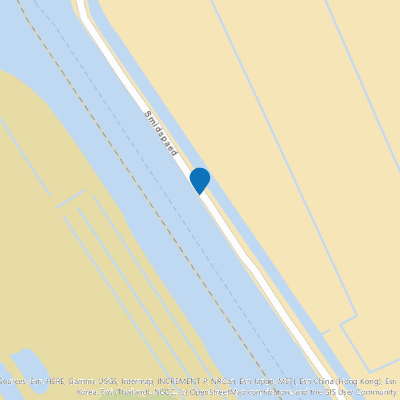Fogelsangh State Country House and Estate
Veenklooster
Fogelsangh State is a country house and estate in Veenklooster that is open to the public.
Take a look
Fogelsangh State is a country house and estate that is open to the public. It was built in 1646 and has been privately owned ever since. The estate was handed down from one generation to the next and never sold. Today Fogelsangh State is owned by Baroness Kyra Livia van Harinxma thoe Slooten, who has granted the Stichting Fogelsangh State foundation the right to use the building. In the 18th and 19th centuries the building was repeatedly refurbished. During the most recent restoration work carried out between 2001 and 2003, elements of the original 17th-century structure were uncovered.
These and other items can be seen in the lift lobby on the ground floor. In addition to what was already known, with these finds the history of the building’s construction can now be pieced together. Fogelsangh State is very much worth seeing. It is also a gorgeous wedding venue. The surrounding park designed by the famous landscape architect Lucas Pieters Roodbaard provides a beautiful backdrop for wedding pictures.
- Every monday closed
- Every tuesday from 13:00 to 17:00
- Every wednesday from 13:00 to 17:00
- Every thursday from 13:00 to 17:00
- Every friday from 13:00 to 17:00
- Every saturday from 13:00 to 17:00
- Every sunday from 13:00 to 17:00
- Distance to your location:
Here you will find Fogelsangh State Country House and Estate
Kleasterwei, 39297 WR Veenklooster Plan your route
from your location
Locations
View all locations-
Attack on the port of Oostmahorn
Attack on the port of Oostmahorn
The liberation of the north-eastern part of Friesland was not achieved without a struggle. The Dutch Domestic Armed Forces (NBS) and Canadian troops fought fierce battles, partly side by side. It was mainly occupiers fleeing in panic who caused fights and shootings that claimed victims on both sides. A fierce battle was also fought over the port of Oostmahorn.
After the liberation of Dokkum, Kollum and Dokkumer Nieuwe Zijlen, the attention of the Canadian troops turned to the port of Oostmahorn. It was the gateway to the island of Schiermonnikoog, which was part of the German defence line, the Atlantic Wall. This bulwark ran along the coasts of France to Norway. During the war, and extensive occupying force was stationed on the Wadden Island.
The village of Oostmahorn was "relieved" by the Dutch Domestic Armed Forces (NBS) on Saturday, 14 April, after the German Grenzschutz (border control) left in silence for Schiermonnikoog. Meanwhile, a group of more than a hundred fleeing SS and SD men and a dozen women crossed the Lauwerszee from Groningen near Zoutkamp with three boats to the island. A number of them were high-ranking SD members of the infamous Scholtenhuis in Groningen. When the NBS saw them sailing past from the port of Oostmahorn, shots were fired back and forth.
The German occupying forces on Schiermonnikoog then wanted to take revenge. The village and the port of Oostmahorn were attacked from the island for two hours on Monday, 16 April. A convoy of three Dutch boats left for the port with the aim of landing there. Meanwhile, the help of the B-Squadron of the Royal Canadian Dragoons (1st Armoured Carrier Regiment) in Dokkum had been called in. The attack was narrowly repelled, but two Canadian soldiers from a reconnaissance group were killed. A defence line of foxholes and armoured vehicles was erected around the village.
Further reinforcements were called in that day from Leeuwarden, where C Company of the North Nova Scotia Highlanders were sent to the coastal strip to patrol for German landing attempts.
After a brief but heavy shelling from the Canadians as a warning, a mediator was sent to the island the next day. The highest-ranking SD officer refused to surrender. They were waiting for an escape with a Schnell boat that was to take them to the German Wadden island of Borkum on 3 May. That turned out to be in vain, but in the meantime they kept the island occupied, even after the general capitulation of the whole of the Netherlands on 5 May.It was not until 11 June that two boats, the MS Waddenzee and the MS Brakzand, transported the last occupiers of Schiermonnikoog to the port of Oostmahorn. A column of army trucks packed with prisoners of war left the port under the guard of the Allies. From there they went to the POW camp in Beerta (Groningen).
 Eanjum
Eanjum -
Ameland - Hollum - Dijk nabij P. Miedeweg - Vogelkijkpunt
Ameland - Hollum - Dijk nabij P. Miedeweg - Vogelkijkpunt Ballum
Ballum
In the neighbourhood
View all routes-
Buitenpost - Veenklooster | Circular Walk 6 of the Bonifatius Kloosterpad Monastery Route
Buitenpost - Veenklooster | Circular Walk 6 of the Bonifatius Kloosterpad Monastery Route (15.0 km)Buitenpost
(15.0 km)Buitenpost -
Fietsroute Smaak fan 'e Walden Damwâld - Buitenpost
Fietsroute Smaak fan 'e Walden Damwâld - Buitenpost (37.1 km)Damwâld
(37.1 km)Damwâld -
Fietsroute Smaak fan 'e Wâlden Buitenpost - Jistrum
Fietsroute Smaak fan 'e Wâlden Buitenpost - Jistrum (29.0 km)Buitenpost
(29.0 km)Buitenpost -
Kollum – De Kooten | Section 5 of the Circular Route through the Noardlike Fryske Wâlden National Landscape conservation area
Kollum – De Kooten | Section 5 of the Circular Route through the Noardlike Fryske Wâlden National Landscape conservation area (17.3 km)Kollum
(17.3 km)Kollum





















